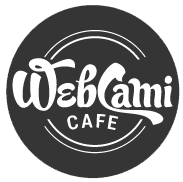Why you need to know how to code to run a WordPress design business

As a member of many web design and development groups online, I’m really shocked at how many people will post, “I really don’t code, and I need help with…” when asking for assistance with WordPress. Now, I’m not a major developer type myself. I’m not going to build a custom shopping cart for anyone. But the coding foundation I learned years ago is invaluable to me as a freelance WordPress web designer. We all have to start somewhere and I’m a firm believer that somewhere is learning to code. Below are my answers to the why, what and where questions about getting your coding skills.
Why do I need to know how to code to run a WordPress design business?
You aren’t just selling someone a website, you are selling them a service. That service is that a competent professional (you) can solve a problem/need (website) for your customers. It is rare that you will build a website and never hear from someone again. In fact, that probably means something went REALLY wrong. Building repeat business is the formula for a successful business. What are you going to do if a client’s dashboard disappears? If a plugin crashes the whole site? What if they want a color change that isn’t an option in the theme you installed? Knowing HTML, CSS and PHP can go a very long way in the quality of service you can provide your clients.
What type of coding do I need to know?
The three basics are:
- HTML: I can write this in my sleep. Do I load up someone’s website with a bunch of custom HTML? No. But my understanding and ability to write and read HTML makes fixing a website so much easier. I know and understand what the files are that are present in an installation. If I need to fix something in a custom way, I can. It’s really just grasping how the entire system is working that give you the edge you need.
- CSS: Understanding HTML is the foundation of understanding CSS. This is the nitty gritty of WordPress for me. I spend hours on every project making universal styling changes in CSS files. Even if I’m using Beaver Builder, I’m not making many styling edits in the module settings, I’m making them in the style.css so myself or my client will have less settings to manipulate to make changes.
- PHP: This is the backbone of WordPress and you must know how to read and edit various files in your templates that enable you to make column changes, responsive site changes, change how content feeds appear, headers, footers, widgets and functions. These are also the files that can totally break your site.
Other things that are very important:
- JavaScript: I will admit, my Java-scripting class was about 12 years ago. I used it much more when I was hand coding custom HTML websites but I can read it and understand how it works. With WordPress, it’s good to know what it is because there are JavaScript files you might want to edit to change the speed of a slideshow or the action on a rollover.
- MySQL: This is the database that is attached to your files and makes your website work. Knowing how to do a handful of things in your database are very important. You can reset a password if needed and you must know how to back the database up and restore it if needed.
- FTP and SFTP: Accessing a website outside of the WordPress dashboard is a must. If you don’t know how to do this, it’s like skydiving without a parachute. This is how I fix hacked websites and deactivate plugins and themes to troubleshoot issues.
Where do I get training to code?
- Lynda.com – When I enrolled in a community college nearly 20 years ago to get web design and development training, Lynda Weinman was the author of many of my books. She started Lynda.com and I enrolled very early online for the training in 2002. She’s now worth 1.5 billion and LinkedIn (Microsoft) owns the site. There are hundreds of courses by industry leaders. You can literally get all the training you need right there. And, in Seattle, you can get a free membership to Lynda.com with your library card (check your own library). Start with HTML, CSS, PHP, JavaScript and then move to WordPress. They have great business classes, too.
- Your local community college – I’m very happy I got my basics through a certificate program at the community college in my neighborhood. Sometimes being in a real class with other students can bring more practical advice than you get online. Here’s a national search tool for certificate programs.
- Coursera – I have taking a couple of SEO courses here and plan to complete a certificate when I get to it in 2018! They have many web design options available.
- Code Academy – I know there are free options here, but this learn how to code a website from scratch would be a great start at $199.
What will this all do for you? GIVE YOU CONFIDENCE. And help you generate much more than a cookie-cutter WordPress website for all your clients. As a web designer, you will constantly need to train because our industry changes every single year. The more skilled you are, the more successful you will be! Get in the habit of always investing in yourself and nothing can stop you!
Resources: Design<for>Hackers – How to Learn Web Design (for reasonable humans who aren’t robots)
